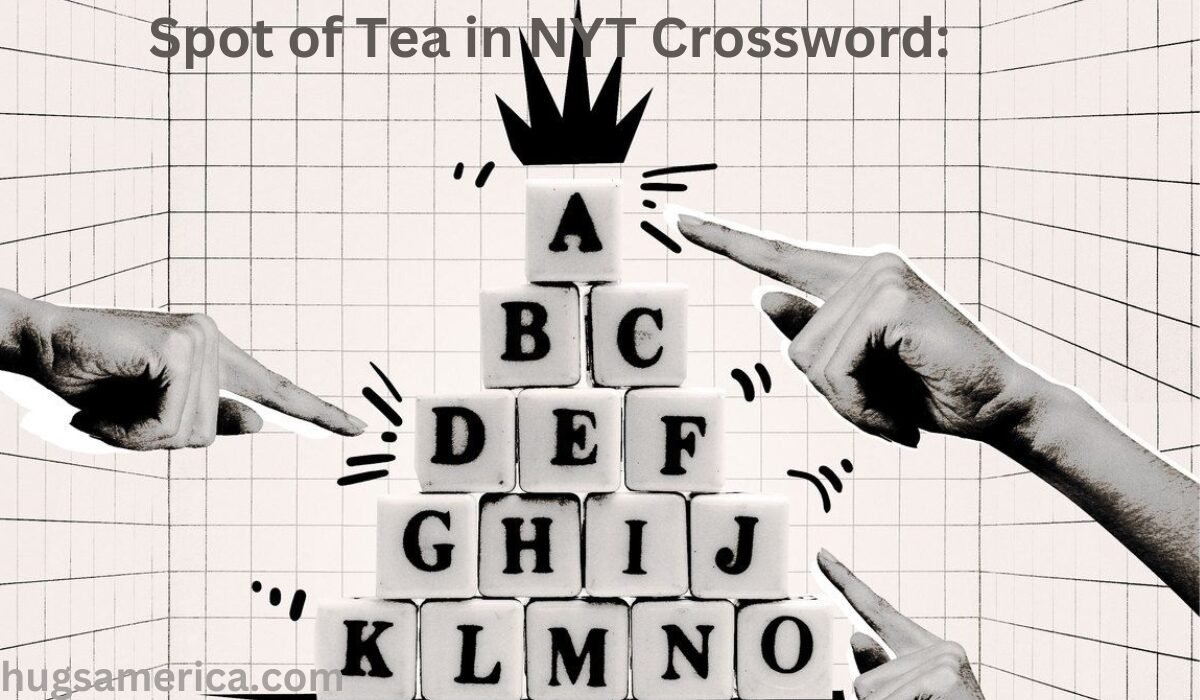Introduction
Crossword puzzles have been a darling hobby for a really long time, giving diversion and a psychological exercise. The New York Times (NYT) crossword is quite possibly of the most popular and testing puzzle out there. One normal enlighten that frequently seems these riddles is Spot of tea. This article will dive into what Spot of tea signifies with regards to the NYT crossword, why it’s a famous piece of information, and how to move toward settling it. Whether you’re a carefully prepared crossword solver or a fledgling, this guide will help you comprehend and partake in this part of the NYT crossword considerably more.
What Does indeed Spot of Tea Mean?
In ordinary language, spot of tea is an English articulation alluding to some tea. Nonetheless, in the NYT crossword, it typically means something more unambiguous. Crossword pieces of information are frequently interesting, and they can utilize jokes, wit, and social references to challenge solvers. Spot of tea in a crossword puzzle is an ideal illustration of such a sign.
Normal Responses for Spot of Tea
Lord Dim: A kind of tea.
Chai: A famous flavored tea.
Mix: A general term for making tea.
Cuppa: English shoptalk for some tea.
Oolong: A conventional Chinese tea.
These responses mirror the variety of potential answers for Spot of tea in the NYT crossword, contingent upon the unique situation and the length of the response expected by the riddle.
Why Is Spot of Tea a Well known Hint?
Social References
The NYT crossword frequently incorporates hints that are socially huge or broadly perceived. Spot of tea is an exemplary English expression, and its consideration in puzzles adds a bit of social style.
Flexibility
The expression spot of tea is flexible and can prompt different responses, making it a fantastic device for crossword makers. It tends to be deciphered in more ways than one, keeping solvers honest and adding to the riddle’s intricacy.
Wit and Quips
Crossword aficionados love wit and quips, and spot of tea offers a lot of chances for this. The piece of information can be wandered aimlessly to fit various settings, giving a wonderful test to solvers.
Ways to tackle “Spot of Tea” Signs
Think about the Length
One of the primary activities while experiencing a “spot of tea” piece of information is to think about the length of the response. This can limit your choices essentially. For instance, in the event that the response is four letters in length, “Chai” may be a decent supposition.
Check the Intersections out
Crossing answers can give significant clues. Assuming you’re uncertain about the spot of tea piece of information, tackling the meeting hints can offer you letters that assist with recognizing the right response.
Contemplate the Subject
Some of the time, NYT crosswords have a subject that can direct you. In the event that the riddle has an English subject, for instance, “Baron Dim” or “Cuppa” may be more probable responses.
Use Setting Hints
Peruse the hint with regards to the riddle. In some cases extra clues inside the riddle or different signs can assist you with sorting out the right response.
Instances of Spot of Tea in NYT Crosswords
Model 1: Simple Riddle
Piece of information: Spot of tea (4 letters)
Reply: Chai
In a simpler riddle, the response may be clear, for example, “Chai,” a well known and effectively conspicuous tea.
Model 2: Medium Riddle
Piece of information: Spot of tea, maybe (4 letters)
Reply: Mix
Here, the piece of information incorporates “maybe,” demonstrating that the response may be a general term connected with tea, similar to “Mix.”
Model 3: Testing Puzzle
Piece of information: Spot of tea for a Londoner (5 letters)
Reply: Cuppa
In a seriously difficult riddle, the hint could reference English shoptalk straightforwardly, prompting the response “Cuppa.”
YOU MAY ALSO LIKE
All You Want to Be familiar with Sqwordle: A Tomfoolery and Testing Word Game
End
Spot of tea”is a wonderful and moving sign that adds wealth to the NYT crossword experience. By grasping its potential implications and rehearsing the tips illustrated in this aide, you can turn out to be more capable at settling these and other precarious signs. Whether you’re an easygoing solver or a committed crossword fan, the information and methodologies gave here will improve your satisfaction and accomplishment with the Spot of Tea in NYT crossword. Cheerful bewildering!
FAQS
1. For what reason does “spot of tea” show up so regularly in NYT crosswords?
“Spot of tea” is a flexible and socially rich expression that offers different potential responses, making it a number one among crossword constructors.
2. How might I work on my possibilities settling “spot of tea” signs?
Center around the length of the response, take a gander at crossing signs, think about the riddle’s subject, and use setting hints to direct your speculation.
3. What are a few normal solutions for “spot of tea” in crosswords?
Normal responses incorporate Lord Dim, Chai, Mix, Cuppa, and Oolong.
4. Are there any stunts to understanding precarious signs like “spot of tea”?
Practice and experience with crossword shows can help. Focus on wit, plays on words, and social references.
5. Will “spot of tea” at any point mean some different option from tea in crosswords?
While it ordinarily alludes to kinds of tea, smart crossword constructors could sometimes involve it in a more non-literal sense, yet this is uncommon.










